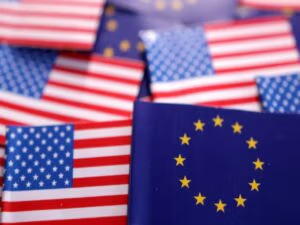The UAE real estate market continued to outperform global benchmarks in the first half of 2025, posting robust returns despite tightening global economic conditions. According to Cushman & Wakefield Core’s mid-year report, the overarching themes of scarcity, selective capital deployment, and divergent sector performance are shaping market dynamics and investor behavior.
Selective Capital, Strong Yield Appeal
“Institutional capital still sees the UAE as one of the few global markets offering yield, visibility, and long-term upside – but underwriting assumptions are shifting,” said PP Varghese, Head of Professional Services at Cushman & Wakefield Core. “Scarcity remains, but pricing power now belongs to assets with the right ESG profile, location and covenant strength.”
Office Sector: Premium Space in High Demand
Dubai’s office market remains tight, with overall occupancy at 92% and Grade A buildings at 95%. Average rents have jumped 22% year-on-year to AED 190 per sq. ft., with DIFC properties leading on pricing. Only 0.89 million sq. ft. of new office space is expected in 2025, while 6.4 million sq. ft. is scheduled for 2026 and beyond—much of it already pre-leased.
In Abu Dhabi, Grade A occupancy is even higher at 97%, while average office rents have grown 11% year-on-year to AED 160 per sq. ft. New supply will mainly be concentrated in Masdar City and The Link, with strong early commitments already in place.
Residential Sector: Dubai Cools, Abu Dhabi Surges
Dubai’s housing market is stabilizing. Sales prices in Q2 2025 rose 14% year-on-year to AED 1,822 per sq. ft., while rent growth slowed to 7%. The city is expected to deliver 43,000 new residential units by year-end—the highest annual total since 2019. While villa demand remains strong, mid-market apartment prices are softening.
In contrast, Abu Dhabi’s residential market is gaining momentum. Prices have surged 18% citywide, led by Saadiyat Island, where values soared 30% to AED 4,172 per sq. ft. Rental growth is also robust at 27%, supported by demand for apartments and over 3,600 units set to be handed over on Yas Island in 2025.
Retail Sector: Focus Shifts to Experience and Strategy
Retail in the UAE remains healthy, with occupancy exceeding 95%. Rents in Dubai’s major malls such as The Dubai Mall and Mall of the Emirates have increased by 12–15% over the past year. Developers and landlords are now prioritizing experiential retail and tenant mix—emphasizing local F&B brands and adaptable global concepts.
The retail approach is becoming more localized, with tailored strategies for Emirati neighborhoods versus expat-centric communities. Community malls and flexible leasing models are gaining ground, aligning with consumer behavior shifts and the Urban Master Plan 2040.
Logistics Sector: ESG and Capacity in Focus
With demand from e-commerce, manufacturing, and chemicals, industrial rents continue to climb due to limited Grade A stock. Sustainability has become a competitive edge: tenants are paying a premium for climate-ready and ESG-compliant warehousing.
The UAE’s strategic infrastructure, reliable logistics network, and affordable energy further enhance the sector’s appeal, despite upward pressure on rental rates.
Data Centres: UAE as a Global Connectivity Hub
Abu Dhabi and Dubai are now global frontrunners among emerging data centre markets. Over 750 MW of capacity is under development, with the sector expected to be worth $3.3 billion by 2030. Sovereign-led infrastructure, low-cost power, and land availability are key drivers attracting institutional investment.
Hospitality Sector: Growth Anchored in Diversified Demand
Dubai saw 8.68 million visitors between January and May 2025, a 7% rise year-on-year. Total 2025 visitation is forecast to hit 20.8 million, up 21% over last year. The city’s hotel occupancy stands at 83%, with ADR at AED 620 and RevPAR growing 7%.
Abu Dhabi also recorded solid performance with 1.52 million guest nights and 87% hotel occupancy. Nearly 20% of the capital’s hospitality demand is now domestic, boosted by cultural attractions and cruise tourism.
Visitors from the CIS, GCC, MENA, Western Europe, and South Asia make up 78% of Dubai’s international tourists. Longer average stays and increased business-leisure travel are driving growth in both emirates.
“Whether it’s hospitality, industrial parks, or offices, success today hinges on strategic alignment and asset-level execution,” noted Varghese.
What’s Next for H2 2025?
With a pipeline of 43,000 residential units, 6.4 million sq. ft. of future office space, and continued momentum in data centre development, the second half of 2025 will test how developers, capital, and occupiers respond to a more segmented, performance-driven market. Investors remain active—but the key to success will lie in precise execution, not broad exposure.





